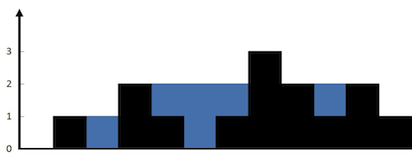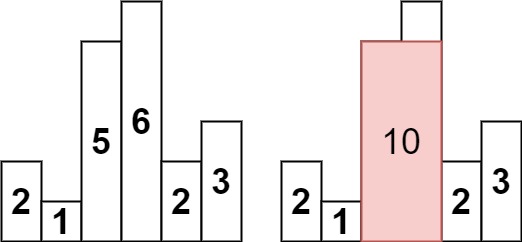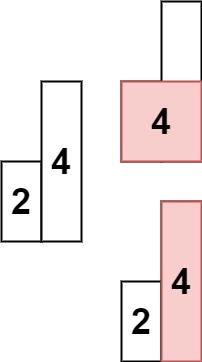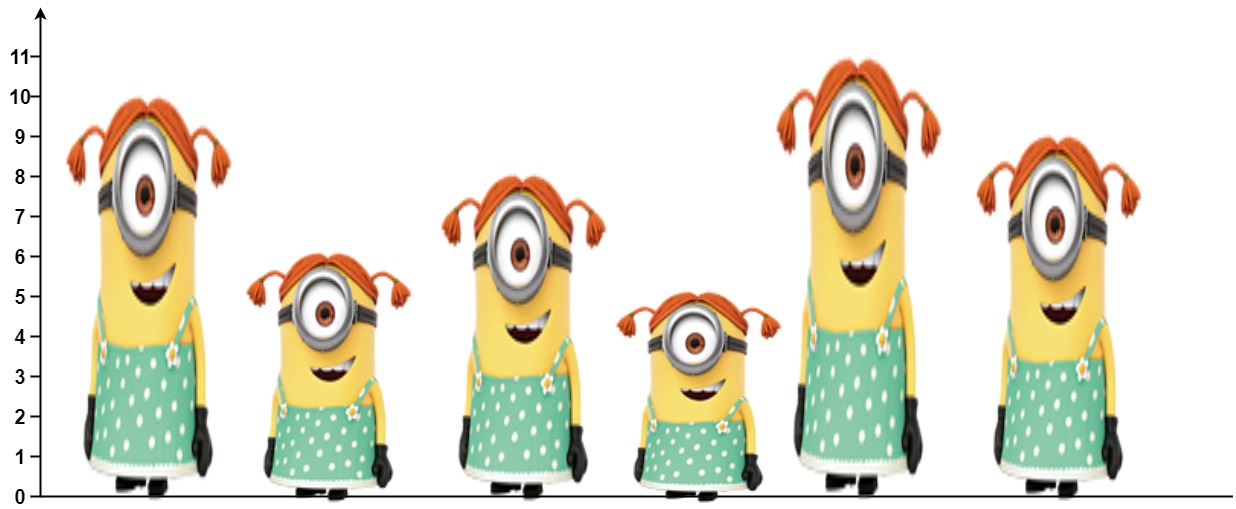08. Stack
Problem 1: Implement Stack using Queues (Leetcode:225)
Problem Statement
Implement a last-in-first-out (LIFO) stack using only two queues. The implemented stack should support all the functions of a normal stack (push, top, pop, and empty).
Implement the MyStack class:
void push(int x)Pushes element x to the top of the stack.int pop()Removes the element on the top of the stack and returns it.int top()Returns the element on the top of the stack.boolean empty()Returnstrueif the stack is empty,falseotherwise.
Notes:
-
You must use only standard operations of a queue, which means that only
push to back,peek/pop from front,sizeandis emptyoperations are valid. -
Depending on your language, the queue may not be supported natively. You may simulate a queue using a list or deque (double-ended queue) as long as you use only a queue's standard operations.
Example 1:
Input:
["MyStack", "push", "push", "top", "pop", "empty"]
[[], [1], [2], [], [], []]
Output:
[null, null, null, 2, 2, false]
Explanation:
MyStack myStack = new MyStack();
myStack.push(1);
myStack.push(2); myStack.top(); // return 2
myStack.pop(); // return 2
myStack.empty(); // return False
Constraints:
1 <= x <= 9- At most
100calls will be made topush,pop,top, andempty.- All the calls to
popandtopare valid.
Follow-up: Can you implement the stack using only one queue?
Problem 2: Valid Parentheses (Leetcode:20)
Problem Statement
Given a string s containing just the characters '(', ')', '{', '}', '[' and ']', determine if the input string is valid.
An input string is valid if:
- Open brackets must be closed by the same type of brackets.
- Open brackets must be closed in the correct order.
- Every close bracket has a corresponding open bracket of the same type.
Example 1:
Input: s = "()"
Output: true
Example 2:
Input: s = "()[]{}"
Output: true
Example 3:
Input: s = "(]"
Output: false
Example 4:
Input: s = "([])"
Output: true
Example 5:
Input: s = "([)]"
Output: false
Constraints:
1 <= s.length <= 104sconsists of parentheses only'()[]{}'.
Problem 3: Basic Calculator II(Leetcode:227)
Problem Statement
Given a string s which represents an expression, evaluate this expression and return its value.
The integer division should truncate toward zero.
You may assume that the given expression is always valid. All intermediate results will be in the range of [-231, 231 - 1].
Note:
You are not allowed to use any built-in function which evaluates strings as mathematical expressions, such as eval().
Example 1:
Input: s = "3+2*2"
Output: 7
Example 2:
Input: s = " 3/2 "
Output: 1
Example 3:
Input: s = " 3+5 / 2 "
Output: 5
Constraints:
1 <= s.length <= 3 * 10^5sconsists of integers and operators('+', '-', '*', '/')separated by some number of spaces.srepresents a valid expression.- All the integers in the expression are non-negative integers in the range
[0, 231 - 1].- The answer is guaranteed to fit in a 32-bit integer.
Problem 4: Evaluate Reverse Polish Notation (Leetcode:150)
Problem Statement
You are given an array of strings tokens that represents an arithmetic expression in a Reverse Polish Notation.
Evaluate the expression. Return an integer that represents the value of the expression.
Note that:
- The valid operators are
'+','-','*', and'/'. - Each operand may be an integer or another expression.
- The division between two integers always truncates toward zero.
- There will not be any division by zero.
- The input represents a valid arithmetic expression in a reverse polish notation.
- The answer and all the intermediate calculations can be represented in a 32-bit integer.
Example 1:
Input: tokens = ["2","1","+","3","*"]
Output: 9
Explanation: ((2 + 1) * 3) = 9
Example 2:
Input: tokens = ["4","13","5","/","+"]
Output: 6
Explanation: (4 + (13 / 5)) = 6
Example 3:
Input: tokens = ["10","6","9","3","+","-11","","/","","17","+","5","+"]
Output: 22
Explanation: ((10 * (6 / ((9 + 3) * -11))) + 17) + 5
= ((10 * (6 / (12 * -11))) + 17) + 5
= ((10 * (6 / -132)) + 17) + 5
= ((10 * 0) + 17) + 5
= (0 + 17) + 5
= 17 + 5
= 22
Constraints:
1 <= tokens.length <= 104tokens[i]is either an operator:"+","-","*", or"/", or an integer in the range[-200, 200].
Problem 5: Next Greater Element II (Leetcode:503)
Problem Statement
Given a circular integer array nums (i.e., the next element of nums[nums.length - 1] is nums[0]), return the next greater number for every element in nums.
The next greater number of a number x is the first greater number to its traversing-order next in the array, which means you could search circularly to find its next greater number. If it doesn't exist, return -1 for this number.
Example 1:
Input: nums = [1,2,1]
Output: [2,-1,2]
Explanation: The first 1's next greater number is 2;
The number 2 can't find next greater number.
The second 1's next greater number needs to search circularly, which is also 2.
Example 2:
Input: nums = [1,2,3,4,3]
Output: [2,3,4,-1,4]
Constraints:
1 <= nums.length <= 104-109 <= nums[i] <= 109
Problem 6: Daily Temperatures (Leetcode:739)
Problem Statement
Given an array of integers temperatures represents the daily temperatures, return an array answer such that answer[i] is the number of days you have to wait after the ith day to get a warmer temperature. If there is no future day for which this is possible, keep answer[i] == 0 instead.
Example 1:
Input: temperatures = [73,74,75,71,69,72,76,73]
Output: [1,1,4,2,1,1,0,0]
Example 2:
Input: temperatures = [30,40,50,60]
Output: [1,1,1,0]
Example 3:
Input: temperatures = [30,60,90]
Output: [1,1,0]
Constraints:
1 <= temperatures.length <= 10530 <= temperatures[i] <= 100
Problem 7: Buildings With an Ocean View (Leetcode:1762)
Problem Statement
Example 1:
Example 2:
Constraints:
Problem 8: 132 Pattern (Leetcode:456)
Problem Statement
Given an array of n integers nums, a 132 pattern is a subsequence of three integers nums[i], nums[j] and nums[k] such that i < j < k and nums[i] < nums[k] < nums[j].
Return true if there is a 132 pattern in nums, otherwise, return false.
Example 1:
Input: nums = [1,2,3,4]
Output: false
Explanation: There is no 132 pattern in the sequence.
Example 2:
Input: nums = [3,1,4,2]
Output: true
Explanation: There is a 132 pattern in the sequence: [1, 4, 2].
Example 3:
Input: nums = [-1,3,2,0]
Output: true
Explanation: There are three 132 patterns in the sequence: [-1, 3, 2], [-1, 3, 0] and [-1, 2, 0].
Constraints:
n == nums.length1 <= n <= 2 * 105-109 <= nums[i] <= 109
Problem 9: Asteroid Collision (Leetcode:735)
Problem Statement
We are given an array asteroids of integers representing asteroids in a row. The indices of the asteriod in the array represent their relative position in space.
For each asteroid, the absolute value represents its size, and the sign represents its direction (positive meaning right, negative meaning left). Each asteroid moves at the same speed.
Find out the state of the asteroids after all collisions. If two asteroids meet, the smaller one will explode. If both are the same size, both will explode. Two asteroids moving in the same direction will never meet.
Example 1:
Input: asteroids = [5,10,-5]
Output: [5,10]
Explanation: The 10 and -5 collide resulting in 10. The 5 and 10 never collide.
Example 2:
Input: asteroids = [8,-8]
Output: []
Explanation: The 8 and -8 collide exploding each other.
Example 3:
Input: asteroids = [10,2,-5]
Output: [10]
Explanation: The 2 and -5 collide resulting in -5. The 10 and -5 collide resulting in 10.
Constraints:
2 <= asteroids.length <= 104-1000 <= asteroids[i] <= 1000asteroids[i] != 0
Problem 10: Min Stack (Leetcode:155)
Problem Statement
Design a stack that supports push, pop, top, and retrieving the minimum element in constant time.
Implement the MinStack class:
MinStack()initializes the stack object.void push(int val)pushes the elementvalonto the stack.void pop()removes the element on the top of the stack.int top()gets the top element of the stack.int getMin()retrieves the minimum element in the stack.
You must implement a solution with O(1) time complexity for each function.
Example 1:
Input ["MinStack","push","push","push","getMin","pop","top","getMin"]
[[],[-2],[0],[-3],[],[],[],[]]
Output
[null,null,null,null,-3,null,0,-2]
Explanation
MinStack minStack = new MinStack();
minStack.push(-2);
minStack.push(0);
minStack.push(-3);
minStack.getMin(); // return -3
minStack.pop();
minStack.top(); // return 0
minStack.getMin(); // return -2
Constraints:
-231 <= val <= 231 - 1- Methods
pop,topandgetMinoperations will always be called on non-empty stacks.- At most
3 * 104calls will be made topush,pop,top, andgetMin.
Problem 11: Basic Calculator (Leetcode:224)
Problem Statement
Given a string s representing a valid expression, implement a basic calculator to evaluate it, and return the result of the evaluation.
Note: You are not allowed to use any built-in function which evaluates strings as mathematical expressions, such as eval().
Example 1:
Input: s = "1 + 1"
Output: 2
Example 2:
Input: s = " 2-1 + 2 "
Output: 3
Example 3:
Input: s = "(1+(4+5+2)-3)+(6+8)"
Output: 23
Constraints:
1 <= s.length <= 3 * 105sconsists of digits,'+','-','(',')', and' '.srepresents a valid expression.'+'is not used as a unary operation (i.e.,"+1"and"+(2 + 3)"is invalid).'-'could be used as a unary operation (i.e.,"-1"and"-(2 + 3)"is valid).- There will be no two consecutive operators in the input.
- Every number and running calculation will fit in a signed 32-bit integer.
Problem 12: Trapping Rain Water (Leetcode:42)
Problem Statement
Given n non-negative integers representing an elevation map where the width of each bar is 1, compute how much water it can trap after raining.
Example 1:
Input: height = [0,1,0,2,1,0,1,3,2,1,2,1]
Output: 6
Explanation: The above elevation map (black section) is represented by array [0,1,0,2,1,0,1,3,2,1,2,1]. In this case, 6 units of rain water (blue section) are being trapped.
Example 2:
Input: height = [4,2,0,3,2,5]
Output: 9
Constraints:
n == height.length1 <= n <= 2 * 1040 <= height[i] <= 105
Problem 13: Largest Rectangle in Histogram (Leetcode:84)
Problem Statement
Given an array of integers heights representing the histogram's bar height where the width of each bar is 1, return the area of the largest rectangle in the histogram.
Example 1:
Input: heights = [2,1,5,6,2,3]
Output: 10
Explanation: The above is a histogram where width of each bar is 1.
The largest rectangle is shown in the red area, which has an area = 10 units.
Example 2:
Input: heights = [2,4]
Output: 4
Constraints:
1 <= heights.length <= 1050 <= heights[i] <= 104
Problem 14: Number of Visible People in a Queue(Leetcode:1944)
Problem Statement
There are n people standing in a queue, and they numbered from 0 to n - 1 in left to right order. You are given an array heights of distinct integers where heights[i] represents the height of the ith person.
A person can see another person to their right in the queue if everybody in between is shorter than both of them. More formally, the ith person can see the jth person if i < j and min(heights[i], heights[j]) > max(heights[i+1], heights[i+2], ..., heights[j-1]).
Return an array answer of length n where answer[i] is the number of people the ith person can see to their right in the queue.
Example 1:
Input: heights = [10,6,8,5,11,9]
Output: [3,1,2,1,1,0]
Explanation:
Person 0 can see person 1, 2, and 4.
Person 1 can see person 2.
Person 2 can see person 3 and 4.
Person 3 can see person 4.
Person 4 can see person 5.
Person 5 can see no one since nobody is to the right of them.
Example 2:
Input: heights = [5,1,2,3,10]
Output: [4,1,1,1,0]
Constraints:
n == heights.length1 <= n <= 1051 <= heights[i] <= 105- All the values of
heightsare unique.



